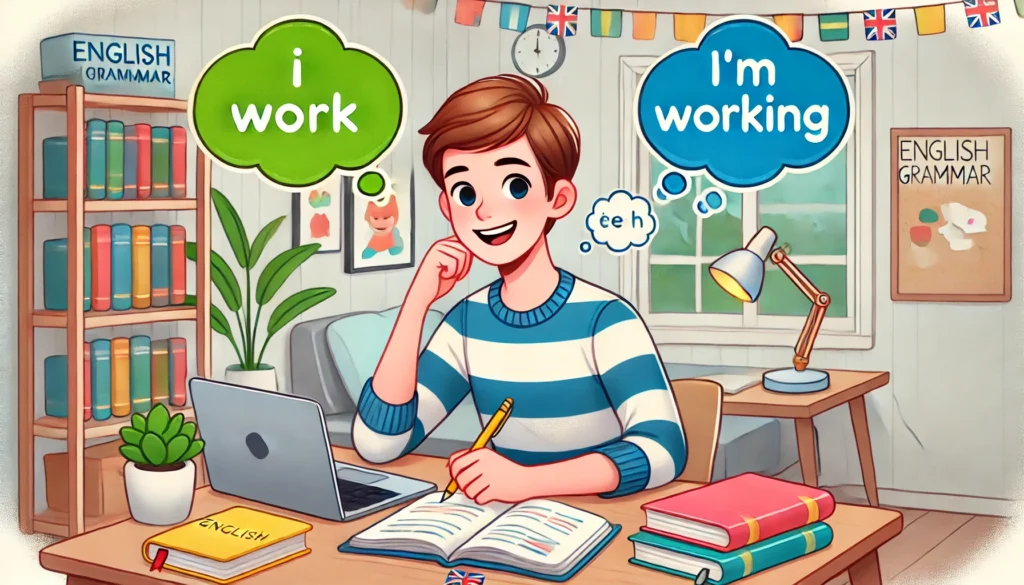If you’ve ever wondered whether to say “I work” or “I’m working,” you’re not alone! Today, we’ll help you understand when to use the present simple and when to use the present continuous — two of the most important tenses in English.
✅ Present Simple
We use the present simple to talk about:
- Habits and routines: → I drink coffee every morning. → She goes to the gym after work.
- Facts and general truths: → Water boils at 100°C. → The sun rises in the east.
- Schedules: → My flight leaves at 10 p.m.
Common signal words: always, usually, often, sometimes, never, every day.
✅ Present Continuous
We use the present continuous to talk about:
- Actions happening now: → I’m reading this blog post. → They’re having dinner.
- Temporary actions: → She’s staying with her cousin this week. → We’re working from home today.
- Near future plans: → I’m meeting my friend later. → We’re going on vacation next week.
Common signal words: now, right now, at the moment, today, this week.
⚡ Common Mistakes
- ❌ I watch TV now. → ✅ I’m watching TV now.
- ❌ She’s liking the movie. → ✅ She likes the movie.
💬 Practice Ideas
- Write three sentences about your daily habits. → Example: I wake up at 7 a.m.
- Write three sentences about what’s happening now. → Example: I’m learning English online.
- Try speaking aloud: → Every day, I study English. Right now, I’m reading this blog.
📚 Keep Learning
For more grammar help, check out our English Grammar Tips page here on the blog. You can also explore free exercises at BBC Learning English — they have fantastic listening and reading practice.
✅ Summary
Mastering the difference between present simple and present continuous will make your English clearer and more natural. Practice regularly, listen carefully to native speakers, and don’t worry about making mistakes — they help you learn!
